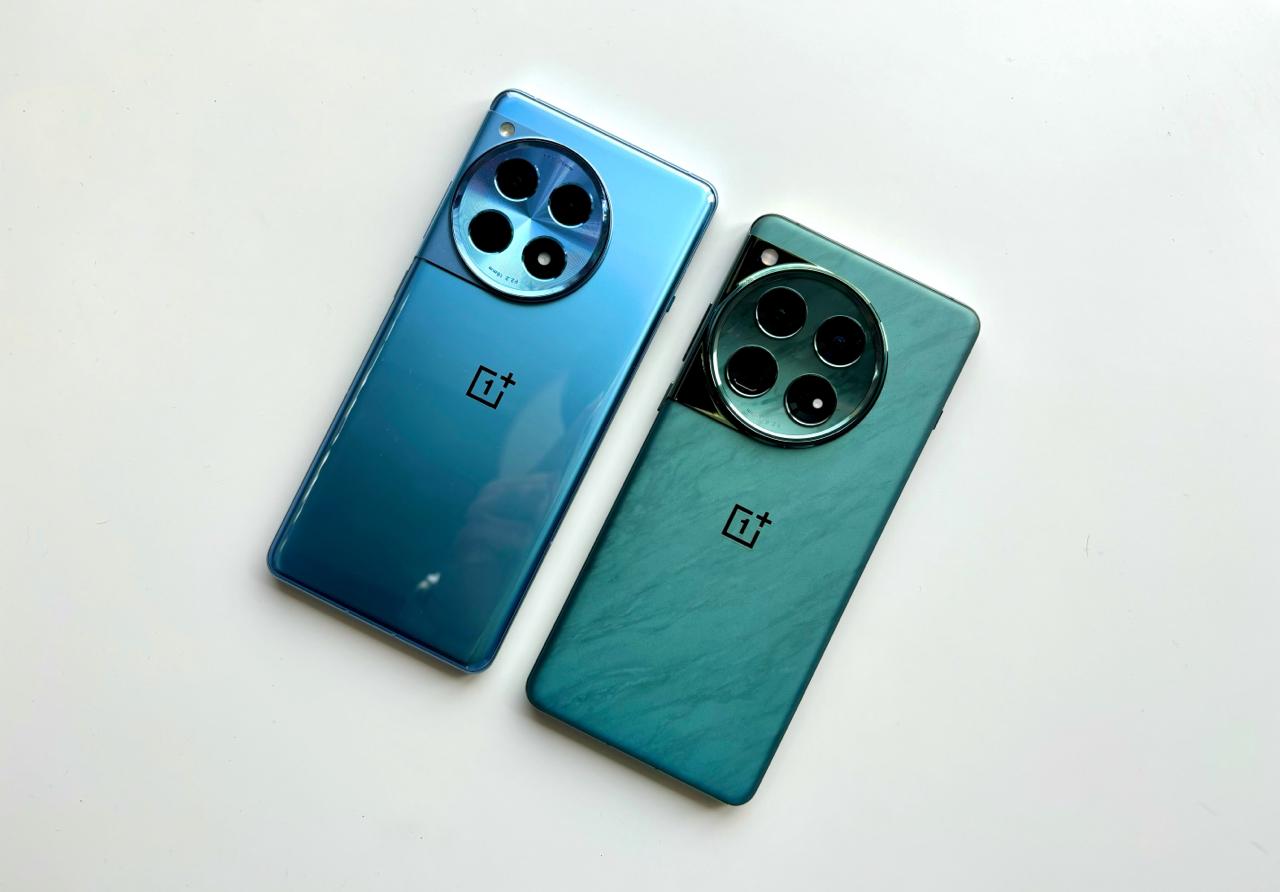Deciding between the OnePlus 12 and the OnePlus 12R can be challenging. Both phones are powerful, but the question is, which one is the perfect match for you? Fear not, as we have got you covered. We’ll go into the key differences between these two smartphones so you can confidently decide.
DESIGN
The moment you hold the phone, you’ll notice that the OnePlus 12R is lighter than the OnePlus 12, weighing nearly 13 grams less. Not only that, but the camera bump on the OnePlus 12 is slightly bigger and thicker than the OnePlus 12R. However, the OnePlus 12’s Flowy Emerald design looks more premium than the OnePlus 12R’s Cool Blue design. Overall, the OnePlus 12 has a more high-end feel compared to the OnePlus 12R.
DISPLAY
Both phones displays are similar, but the OnePlus 12 has a slightly larger and crisper display than the OnePlus 12R. What’s more, the OnePlus 12 has a smoother 120Hz refresh rate, which is perfect for gamers and content creators. Meanwhile, the OnePlus 12R offers a respectable 90Hz refresh rate, ensuring a generally fluid experience. If you love watching content on your phone, the viewing experience is much better on the OnePlus 12.
PROCESSOR
Both phones are fast, but the OnePlus 12’s Snapdragon 8 Gen 3 processor is slightly faster than the OnePlus 12R’s Snapdragon 8 Gen 2 processor. Although there is no noticeable difference in day-to-day activities, the OnePlus 12 is faster on paper. Additionally, the OnePlus 12 comes with up to 16GB of RAM and a 512GB storage option, while the OnePlus 12R only has a maximum of 16GB of RAM and a 256GB storage option.
CAMERA
The OnePlus 12 is known for its impressive camera capabilities. It features a 50MP primary camera, a 64MP periscope lens with 3x optical zoom, and a 48MP macro camera, making for a more versatile triple-lens setup co-developed with Hasselblad. In contrast, the OnePlus 12R has a 50MP primary sensor, an 8MP ultra-wide lens, and a 2MP macro sensor. The OnePlus 12 can zoom up to 120x, while the OnePlus 12R only goes up to 10x. However, if you love taking selfies, the OnePlus 12 can capture better photos with its 32MP sensor. In contrast, the OnePlus 12R can only take pictures with a 16MP sensor.
BATTERY & CHARGING:
Both phones have large batteries, but the 12R has a slightly larger capacity. However, the 12 boasts faster 80W wired charging, which allows you to quickly recharge your phone compared to the 65W charging of the 12R. The OnePlus 12 can also be charged wirelessly. It can charge any wireless charging-enabled device like an iPhone, while the OnePlus 12R can only be charged through a cable.
PRICING
The OnePlus 12R has a significantly lower price tag than the OnePlus 12, making it a tempting budget option. However, remember that a lower price often means trade-offs.
VERDICT
Ultimately, the decision comes down to your priorities. If you value cutting-edge performance, top-tier cameras, and the fastest charging, the OnePlus 12 is the way to go. However, if you’re on a budget and can live with slight performance and camera downgrades, the OnePlus 12R delivers excellent value for money.
Also read: Realme 12 Pro Review
